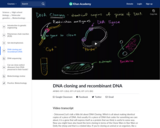
Introduction to DNA cloning.
- Subject:
- Living Systems and Processes
- Science
- Material Type:
- Lesson
- Provider:
- Khan Academy
- Provider Set:
- Khan Academy
- Author:
- Sal Khan
- Date Added:
- 06/02/2016

Introduction to DNA cloning.
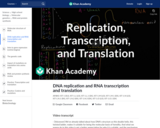
How DNA is copied (replication). How information in DNA can be used to make a protein.
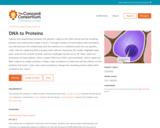
Explore the relationship between the genetic code on the DNA strand and the resulting protein and rudimentary shape it forms. Through models of transcription and translation, you will discover this relationship and the resilience to mutations built into our genetic code. Start by exploring DNA's double helix with an interactive 3D model. Highlight base pairs, look at one or both strands, and turn hydrogen bonds on or off. Next, watch an animation of transcription, which creates RNA from DNA, and translation, which 'reads' the RNA codons to create a protein.

In this video module, students learn how scientists use genetic information from dogs to find out which gene (out of all 20,000 dog genes) is associated with any specific trait or disease of interest. This method involves comparing hundreds of dogs with the trait to hundreds of dogs not displaying the trait, and examining which position on the dog DNA is correlated with the trait (i.e. has one DNA sequence in dogs with the trait but another DNA sequence in dogs not displaying the trait). Students will also learn something about the history of dog breeds and how this history helps us find genes.
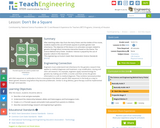
After watching video clips from the Harry Potter and the Goblet of Fire movie, students explore the use of Punnett squares to predict genetic trait inheritance. The objective of this lesson is to articulate concepts related to genetics through direct immersive interaction based on the theme, The Science Behind Harry Potter. Students' interest is piqued by the use of popular culture in the classroom.
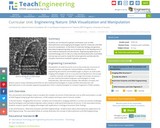
Students are introduced to genetic techniques such as DNA electrophoresis and imaging technologies used for molecular and DNA structure visualization. In the field of molecular biology and genetics, biomedical engineering plays an increasing role in the development of new medical treatments and discoveries. Engineering applications of nanotechnology such as lab-on-a-chip and deoxyribonucleic acid (DNA) microarrays are used to study the human genome and decode the complex interactions involved in genetic processes.

Under the "The Science Behind Harry Potter" theme, a succession of diverse complex scientific topics are presented to students through direct immersive interaction. Student interest is piqued by the incorporation of popular culture into the classroom via a series of interactive, hands-on Harry Potter/movie-themed lessons and activities. They learn about the basics of acid/base chemistry (invisible ink), genetics and trait prediction (parseltongue trait in families), and force and projectile motion (motion of the thrown remembrall). In each lesson and activity, students are also made aware of the engineering connections to these fields of scientific study.

Introduction to extranuclear inheritance (part 1).

How haploid gametes (sperm and egg cells) combine to form a diploid zygote with two sets of chromosomes. Created by Sal Khan.
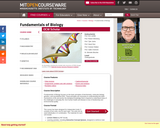
Fundamentals of Biology focuses on the basic principles of biochemistry, molecular biology, genetics, and recombinant DNA. These principles are necessary to understanding the basic mechanisms of life and anchor the biological knowledge that is required to understand many of the challenges in everyday life, from human health and disease to loss of biodiversity and environmental quality.
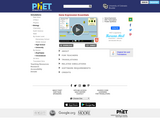
Express yourself through your genes! See if you can generate and collect three types of protein, then move on to explore the factors that affect protein synthesis in a cell.
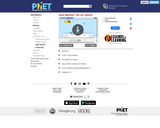
Build a gene network! The lac operon is a set of genes which are responsible for the metabolism of lactose in some bacterial cells. Explore the effects of mutations within the lac operon by adding or removing genes from the DNA.
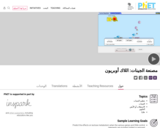
Build a gene network! The lac operon is a set of genes which are responsible for the metabolism of lactose in some bacterial cells. Explore the effects of mutations within the lac operon by adding or removing genes from the DNA.

The topic of this video module is genetic basis for variation among humans. The main learning objective is that students will learn the genetic mechanisms that cause variation among humans (parents and children, brothers and sisters) and how to calculate the probability that two individuals will have an identical genetic makeup. This module does not require many prerequisites, only a general knowledge of DNA as the genetic material, as well as a knowledge of meiosis.

This activity allows students to work through a series of games to learn about DNA, protein bases, and how they combine, dominant and recessive genes, Punnett Squares and genotypes, and phenotypes.
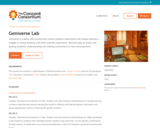
The Geniverse software is being developed as part of a five-year research project funded by the National Science Foundation. Still in its early stages, a Beta version of the software is currently being piloted in six schools throughout New England. We invite you to try the current Beta version, keeping in mind that you may encounter errors or pages that are not fully functional. If you encounter any problem, it may help to refresh or reload the web page.

The Genetics Student Edition book is one of ten volumes making up the Human Biology curriculum, an interdisciplinary and inquiry-based approach to the study of life science.

The Lives of Cells Student Edition book is one of ten volumes making up the Human Biology curriculum, an interdisciplinary and inquiry-based approach to the study of life science.
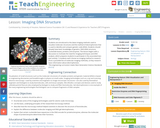
Students are introduced to the latest imaging methods used to visualize molecular structures and the method of electrophoresis that is used to identify and compare genetic code (DNA). Students should already have basic knowledge of genetics, DNA (DNA structure, nucleotide bases), proteins and enzymes. The lesson begins with a discussion to motivate the need for imaging techniques and DNA analysis, which prepares students to participate in the associated two-part activity: 1) students each choose an imaging method to research (from a provided list of molecular imaging methods), 2) they research basic information about electrophoresis.
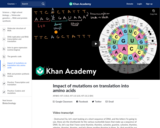
Using an amino acid translation table to understand the impact of point and frameshift mutations.